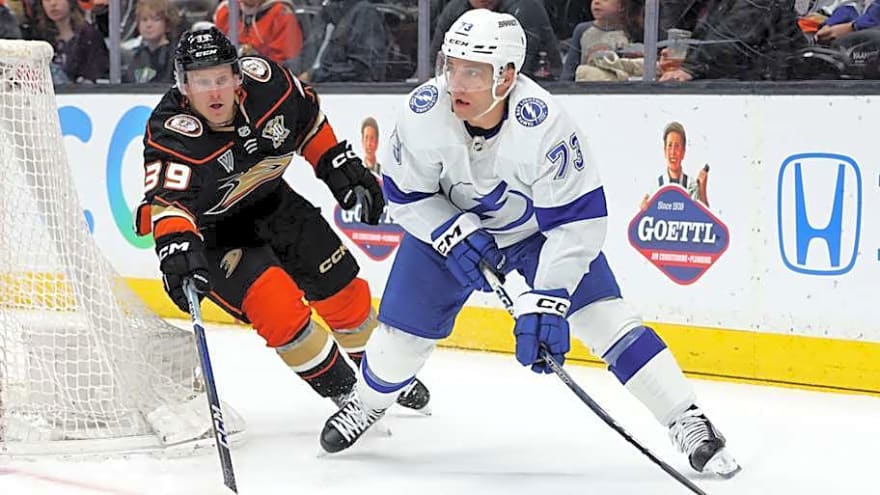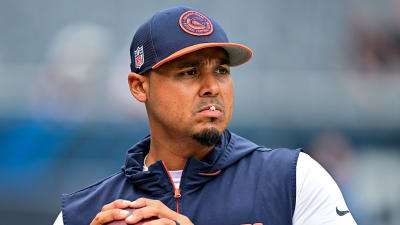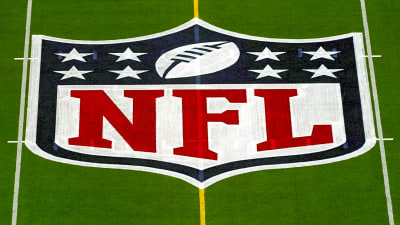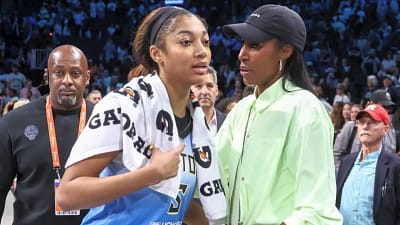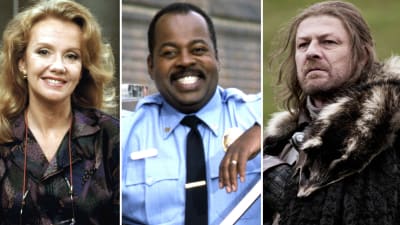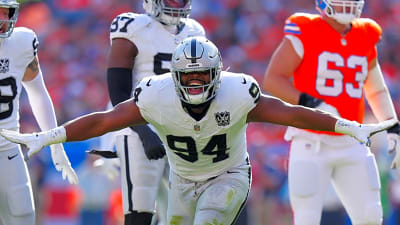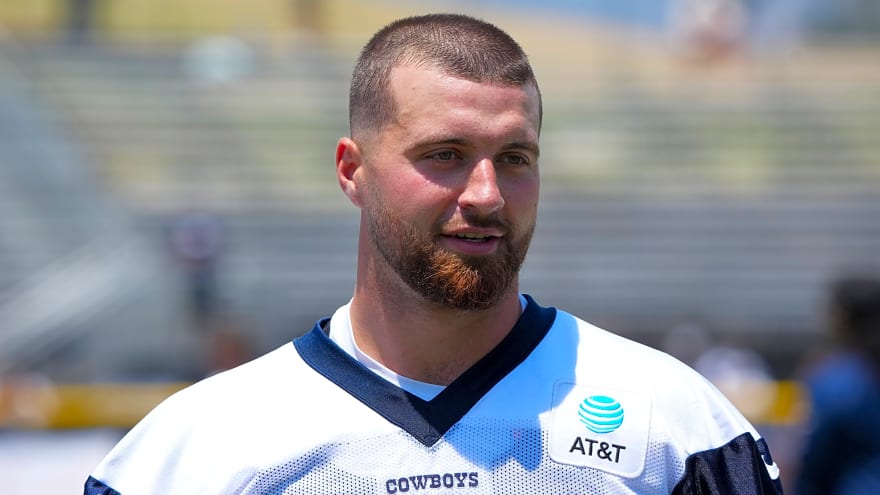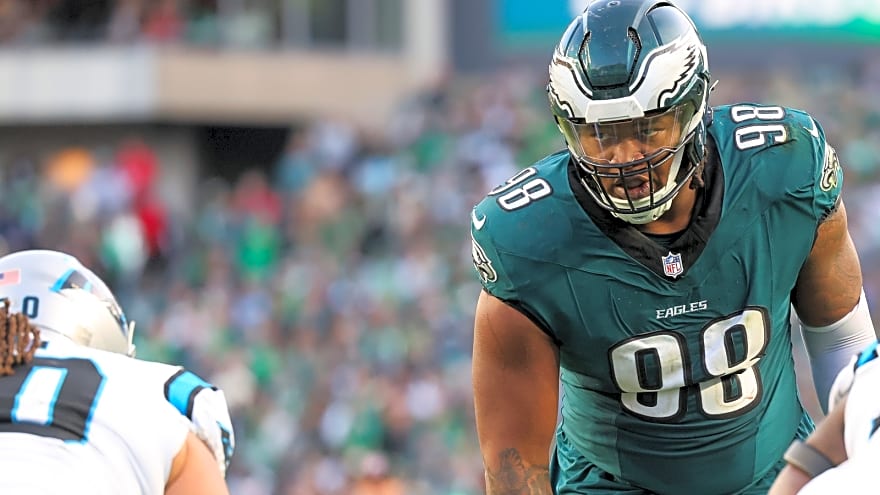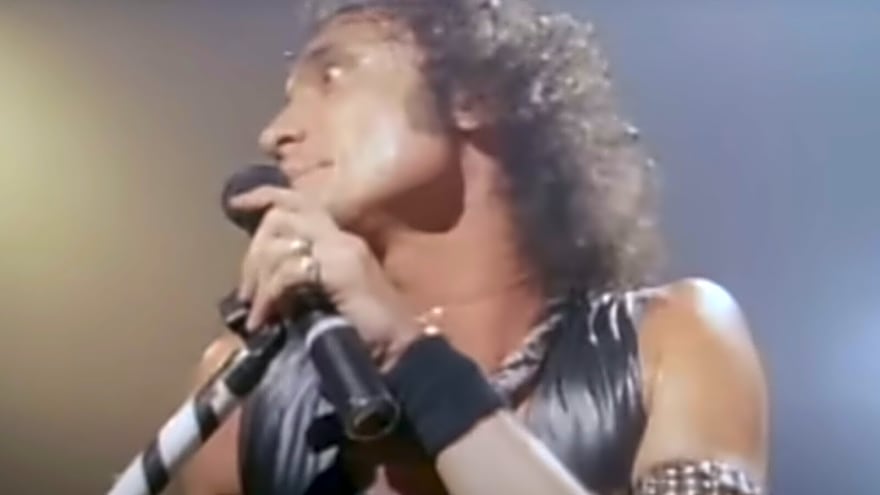In place since 1936, the NFL draft has produced countless gems selected toward the end of those events. Here is the best one each team has selected. With the draft dropping from 30 rounds to seven, teams had more time to locate late-round talent during previous eras. For the purposes of this offering, we only considered players drafted beyond Round 5 to be late-round choices under the modern draft format.
1 of 32
Arizona/St. Louis Cardinals: Pat Fischer (1961)
NFL Photos/Getty Images
Hall of Famers Larry Wilson and Roger Wehrli's Cardinals careers overlapped for a few seasons. Unfortunately, this came after the team lost another standout DB. A 17th-round pick (232nd overall) out of Nebraska, Fischer signed with Washington in 1968, leading to second- and third-round picks going St. Louis' way as then-required compensation for a free agency defection. At 5-foot-9 and 170 pounds, Fischer became famous for popularizing the bump-and-run technique. The tenacious cornerback intercepted 56 career passes, including 10 in 1964. After teaming with Wilson in Missouri, Fischer closed out his career alongside fellow Hall of Fame safety Ken Houston in Washington.
George Gojkovich/Getty Images
No center has played more games than Van Note, who became a Falcons cornerstone despite arriving as an 11th-round pick (No. 262 overall). The Kentucky product beat eventual Falcons QB Steve Bartkowski into the NFL by six years and outlasted the decade-long Atlanta starter, playing until age 40. Van Note played 18 seasons and logged 246 games. Most of those (226) came as a starter for the durable performer, who accumulated six Pro Bowl distinctions. Van Note and long-running LT Mike Kenn formed a Pro Bowl tandem up front in Atlanta in the 1980s, but Van Note had been at work for nearly a decade by the time Kenn (a 17-year vet himself) arrived.
Icon Sportswire
As the Ravens were assembling their storied 2000 defense, they began grooming a late-round investment as a future piece. Thomas arrived as a sixth-round pick (186th overall) out of Southern Miss, effectively being stashed while the Ravens saw their Peter Boulware-Jamie Sharper OLB duo thrive. After exposing Sharper in the Texans' 2002 expansion draft, the Ravens turned to Thomas as a starter. He impressed as a Ray Lewis sidekick, racking up 28 sacks from 2004-06 to keep the Ravens as an upper-echelon defense. The Patriots added Thomas after his first-team All-Pro 2006 season, and he played a supporting role in powering that team to 16-0.
Focus on Sport/Getty Images
One of the best quarterbacks not in the Hall of Fame, Lamonica is remembered for his Raiders years. Before the deep-ball maven collected two AFL MVP awards in Oakland, he entered the league as a Bills 24th-round pick out of Notre Dame. This came as the AFL draft consisted of 29 rounds. Lamonica functioned as QB insurance in Buffalo, holding a clipboard behind starter Jack Kemp. Lamonica collected two of his three AFL titles in Buffalo, before being traded in a package that brought back Raiders QB Tom Flores and All-AFL wideout Art Powell. The Raiders fleeced the Bills, as Lamonica started six seasons in Oakland, earning four Pro Bowl nods while beginning a seminal Raiders ascent.
Mark LoMoglio/Icon Sportswire
The franchise launching in 1995 limits the options here, but Munnerlyn carved out a 10-year career as a seventh-round pick. The No. 216 overall choice out of South Carolina, Munnerlyn became a key presence as Ron Rivera and Co. guided Carolina to its franchise apex. Munnerlyn would miss the Panthers' Super Bowl 50 season, having signed with the Vikings in 2014, but he was in place as Carolina's slot corner during a 12-4 2013 slate. Munnerlyn notched five pick-sixes during his first Panthers stint, and after three Minnesota seasons, the 5-foot-9 CB returned for two more to close his career where it began.
Bettmann/Getty Images
The NFL's first draft produced four Hall of Famers. Two (Joe Stydahar, Tuffy Leemans) emerged in the first two rounds. Another came from Round 8 (Wayne Millner). The Bears, however, landed one within the draft's final five selections, taking Fortmann 78th overall in what began as a nine-round event. Fortmann became one of the best guards in NFL history, going 8-for-8 in All-Pro honors (five first-team nods) during his career. That Chicago stay doubled as the Bears' zenith, as the team won three titles from 1940-43. The Colgate alum helped Sid Luckman to Canton while enabling the Bears to lead the NFL in rushing four times during his career.
Ron Kuntz Collection/Diamond Images via Getty Images
Thrown into one of the worst eras to be a receiving tight end, Trumpy nevertheless provided a strong return on investment for the expansion Bengals. Paul Brown's first draft running his new team included a 12th-round flier on Trumpy, chosen 301st overall in the second of the AFL-NFL common drafts. Joining Isaac Curtis as standout Bengal playmakers stifled by the defense-oriented rules of the era, Trumpy made an immediate impact by making the Pro Bowl after a 639-yard rookie season. He flourished during short-lived QB phenom Greg Cook's one season (1969) and picked up two more Pro Bowl nods during a 10-year career.
Ronald C. Modra/Getty Images
Sipe's 1980 MVP award gave him the nod over 1984 10th-rounder Earnest Byner, but he hobnobbed in a division that featured top-three picks in Terry Bradshaw and Dan Pastorini and accuracy kingpin Ken Anderson for several years. The Browns found a gem at pick No. 330, with Sipe becoming the team's regular starter in 1976. Injuries and mediocre defenses held back the Sipe-era Browns, but they elevated their stature during the QB's tenure. Sipe threw a career-high 30 TD passes and led the NFL in passer rating during his 1980 MVP season, when he led the "Kardiac Kids" to the AFC Central title, stalling the Steeler dynasty. Sipe joined the USFL in 1984..
Bettmann/Getty Images
Known to find a gem or two during the Tex Schramm-Gil Brandt-Tom Landry trio's extended run, the Cowboys located Cole with the 428th pick in 1968. The 16th-round choice (during the 17-round draft period) went on to start 134 games during a 13-year career spent entirely in Dallas. A role player for the team's Doomsday defenses, Cole played alongside the likes of Bob Lilly, Randy White, Too Tall Jones and Harvey Martin, residing as a link from the Lilly years to the White-anchored defenses. Playing both defensive end and defensive tackle, Cole is retroactively credited with 59 career sacks while playing regular roles for the Cowboys' 1971 and '77 Super Bowl-winning teams.
George Gojkovich/Getty Images
This will make sense, as our criteria rewards the Broncos for finding Mecklenburg in the final round of a 12-round draft compared to landing Shannon Sharpe and Terrell Davis where they did. Sharpe is ineligible here, as a seventh-rounder in a 12-round draft, while Davis went 196th to Mecklenburg's 310th. A former Division II recruit, Mecklenburg did not reach Davis' heights but matched the Hall of Famer in All-Pro nods (three). More could have come Mecklenburg's way, but the Broncos deployed him across the formation, limiting him statistically. Mecklenburg still totaled 79.5 sacks, made six Pro Bowls and anchored Denver's front seven en route to three Super Bowls.
James Drake/Getty Images
The Lions drafted Retzlaff in the 22nd round, bringing in the pass catcher with the No. 266 overall pick. After not making the team and spending time in the military, Retzlaff resurfaced to create a memorable legacy in Philadelphia. Operating as both a split end and tight end, Retzlaff became an important presence during Norm Van Brocklin's time quarterbacking the Eagles. Retzlaff led the 1960 Eagles, who beat the Packers to claim an NFL title, in receiving yards and later surpassed 1,000 while working as a tight end at 34. Retzlaff played 11 Eagles seasons, earning three All-Pro honors.
Todd Kirkland/Icon Sportswire
Positional value would lean toward Packer backup-turned-Seahawk starter Matt Hasselbeck (Round 6, 1998) being the pick here, but Driver played 14 seasons with the Packers as a seventh-round pick from Division I-FCS Alcorn State. The No. 213 overall pick served as the steadiest option during the back half of Favre's Green Bay stay, quietly amassing seven 1,000-yard seasons in an eight-year period (2002-09). Making three Pro Bowls with Favre, Driver helped break in Aaron Rodgers in his mid-30s. The longest-tenured wide receiver in Packers history, Driver stuck around as a supporting actor on the team's 2010 Super Bowl-winning team.
Juan DeLeon/Icon Sportswire
The NFL's newest franchise has gone through 23 drafts. While it found world-class sprinter-turned-return man Trindon Holliday late in the 2010 draft, the pick here is Newton, obtained with a seventh-round pick a year later. By his second season, Newton -- chosen 214th overall out of Arkansas State -- commandeered the Texans' right tackle job. He started five straight seasons there, protecting Matt Schaub and Brian Hoyer on playoff teams, before suffering a brutal injury during a Monday-night game in Denver. Newton sustained two patellar tendon tears on the same play. He somehow made it back for a one-game 2018 cameo, but that sequence effectively ended his career.
14 of 32
Indianapolis/Baltimore Colts: Raymond Berry (1954)
Focus on Sport/Getty Images
Arriving a bit before Johnny Unitas, Berry emerged as the future QB legend's top target despite entering the NFL in Round 20. The Colts chose Berry 232nd overall out of SMU and had him in top form by the time Unitas turned heads as a free agency flier. One of the greatest route-running technicians in NFL history, Berry led the league in receiving three times; this included a 1,298-yard season in 1960, still in the 12-game era. Berry's signature performance -- 12 catches, 178 yards, one touchdown -- came against the Giants in the 1958 NFL title game (a.k.a. "The Greatest Game Ever Played"). He lasted 14 seasons, starting and finishing in Baltimore.
Rich Kane/Icon Sportswire
Clark's 11-year career being spent mostly as a starter nixed a Gardner Minshew acknowledgement here. The Jaguars chose Clark in the seventh round (245th) out of Illinois, and the linebacker became a nomadic starter, popping up in interesting places as his career progressed. The off-ball 'backer ended up starting 102 games for five teams, beginning that tour of duty with the Jags. Clark joined Sean Payton's first Saints team, which journeyed to the NFC championship game, and was a 15-game starter for a 2008 Giants team that was better than its Super Bowl-winning predecessor. He still started 10 games in his 2010 finale, back in New Orleans.
Focus on Sport/Getty Images
Trey Smith could be the choice a few years from now, but the Chiefs nabbing Garrett in the 20th round of a 20-round draft makes him the clear choice. The final AFL draft saw Garrett become the fourth-to-last player chosen (178th out of USC). Garrett was not a mere late-round flier, having won the 1965 Heisman Trophy and having been a fourth-round Dodgers draftee. He chose the Chiefs over the Rams and became an all-time RB find, starting immediately and earning All-AFL acclaim in 1967. The handoff recipient on perhaps the Super Bowl's most memorable play call ( 65 Toss Power Trap), Garrett produced two 1,000-yard seasons, the second with the Chargers in 1972.
17 of 32
Las Vegas/Oakland Raiders: Rod Martin (1977)
Bettmann/Getty Images
Part of a stacked defense that included three Hall of Famers (Howie Long, Ted Hendricks, Mike Haynes) and impact presences in Lester Hayes, Matt Millen and Lyle Alzado, Martin was a glue player that contributed frequently as a pass rusher. The Raiders found the outside linebacker in the 12th round (317th overall) out of USC; he started during both the team's early-1980s Super Bowl-winning seasons. Martin intercepted three passes in Super Bowl LV, though he did not win MVP honors, and was at his best by the time the team moved to Los Angeles. Earning All-Pro acclaim in 1983 and '84, Martin notched two pick-sixes in '83 and 11 sacks in '84. He enjoyed a 12-year Raiders run.
18 of 32
Los Angeles/San Diego Chargers: Trent Green (1993)
Charles Baus/Icon Sportswire
Some players in this collection did their best work elsewhere; in Green's case, all his NFL service time occurred elsewhere. The Chargers took an eighth-round flier on Green (22nd overall) out of Indiana, during the draft's eight-round one-off that year. The Bolts cut the QB during his second training camp with the team, leading him to Washington. Green, however, became better remembered for a preseason ACL tear that began Kurt Warner's storybook rise and for rebounding with the Chiefs. Kansas City traded a first-round pick for Green in 2001 and parked him on a three-Hall of Famer offense. Green earned two Pro Bowl nods, extending his career until 2008.
Owen C. Shaw/Getty Images
The Rams have found some late-round receiving gems; the list also includes eventual Colts starter Jimmy Orr and NFL 1970s receiving yards leader Harold Jackson. Hill, however, arrived in the 12th round of a 12-round draft. Chosen with the third-to-last selection (328th), Hill worked mostly as a return man in L.A. before a 1985 trade to Houston created a more notable second act. The first of Warren Moon's future Run and Shoot weapons to arrive in Houston, Hill ripped off five 1,000-yard seasons from 1985-91. Operating as a downfield and midrange target, Hill gave the Oilers a stable option as they created a perennial contender around Moon. The two-time Pro Bowler played 15 seasons.
Focus on Sport/Getty Images
The Vikings ended up with two nontraditional standout wide receivers, snagging Cris Carter via waivers and Anthony Carter in a trade before he played a down with the team that drafted him. The Dolphins took Anthony in the 12th round (334th) because he Michigan star had pledged to join the USFL, being among many who did so. Effectively, a bet the NFL would outlast the upstart league, the Dolphins waited out Carter and then traded his rights to the Vikings in 1985. The diminutive playmaker made three Pro Bowls in Minnesota, helping the Vikes venture to three straight playoff fields in the late '80s, and extended his career to 1995.
Icon Sportswire
The Vikings found a long-running center in the sixth round out of Harvard. Birk, the No. 173 overall pick, won the team's starting job in 2000. Despite never starting a game during his first two seasons, Birk earned Pro Bowl accolades that year. The ex-Ivy Leaguer picked up five more during an 11-season Minnesota run that featured him help unleash the likes of Cris Carter, Randy Moss and Adrian Peterson. The Vikes did not keep Birk for their brief Brett Favre period, and he spent four seasons with the Ravens. The last of those, 2012, brought him a Super Bowl ring. Birk started every game for that Ravens squad, earning a storybook Baltimore sendoff along with Ray Lewis and Ed Reed.
John Iacono/SI/Icon Sportswire
Whether you prefer Jim Brown, Jerry Rice, Lawrence Taylor or even Peyton Manning as players, debating the greatest draft find in NFL history is ridiculous. 2000's seventh QB chosen, the part-time Michigan starter arrived as Drew Bledsoe's backup via the 199th overall pick. Eyeing Brady earlier, the Patriots pounced -- though, a sixth-round selection does not indicate much confidence in a passer -- and changed their franchise trajectory. Brady rewrote the NFL record book and stretched the boundaries of his position by remaining an effective starter until 45. As you may have heard, seven Super Bowl rings and 10 appearances occurred along the way.
John Sommers II/Icon Sportswire
Sean Payton could afford to invest in other positions for much of his Saints tenure; he landed his No. 1 wide receiver in the seventh round of his first draft at the helm. The Saints prevented Colston from reaching the post-draft free agent market by choosing him 252d overall. The Hofstra product became a dependable Drew Brees weapon, as the Saints used a rotation of receivers around him during the QB's prime. The big-bodied target churned out six 1,000-yard receiving seasons and scored 72 touchdowns during his 10-year career. Colston played a key role for the Super Bowl-winning Saints team and the squad that set the NFL single-season yardage record two years later.
Robert Riger/Getty Images
The top O-lineman on the Giants' bevy of Eastern Conference championship teams came from the 27th round. The Giants chose Brown 322nd overall out of Morgan State, a historically Black school. Brown became one of the best draft picks in NFL history, anchoring the team's front for 13 seasons. The agile left tackle, who dabbled on defense at points, soared to eight straight All-Pro teams (six first-team selections) from 1956-63. In that time, New York journeyed to six NFL championship games, winning in 1956. The early-career Vince Lombardi pupil cruised to the Hall of Fame and remains one of the best LTs in NFL annals.
George Gojkovich/Getty Images
The Jets found their four longest-serving O-linemen in Round 8 or later. While Winston Hill is in the Hall of Fame, Fields arrived later in the draft. The Jets found Fields in the 14th round in 1975, when the draft stood at 17 rounds. The Jets also identified Fields (chosen 349th overall) from Division III Widener University (Pa.) and turned to him as their starting center for 12 seasons. A 14-year veteran, Fields started 155 games and made three All-Pro teams. He helped the likes of John Riggins and Freeman McNeil to standout seasons, while starting for four Jets playoff teams in the 1980s.
Bill Streicher-Imagn Images
The most unlikely Eagles success story may come from their seventh-round Jordan Mailata pick, and the team found Hall of Fame tackle Lou Creekmur in the 26th round in 1948. Creekmur, however, never played for the Eagles, catching on in Detroit. The pick is Kelce, who locked down the All-Pro first team's center slot for most of his 30s. The older Kelce brother became a late bloomer from the sixth round (191st overall). A zero-time All-Pro in his 20s, Kelce assembled an astounding stretch that featured six first-team honors from 2017-23. A 13-year Eagle/initial Tush Push igniter, the now-omnipresent NFL figure will go down as one of the best centers in league history.
Mark Alberti/Icon Sportswire
Preferring to find their wide receivers after the first round, the modern-era Steelers did their best work with Brown -- for a while, at least. Before complicating his chances at first-ballot Hall of Fame induction with a turbulent final three-plus seasons, Brown became the NFL's best receiver despite emerging in the sixth round (195th overall) out of Central Michigan. One of five receivers to post at least four first-team All-Pro honors since the merger, Brown joins Jerry Rice as the only two to do so in four straight years. The Steelers lost control of their mercurial superstar in 2018, and he self-destructed soon after. But Brown is certainly an all-time draft find.
Focus on Sport/Getty Images
Clark caught 10 passes during his final year at Clemson, but as the roommate of quarterback prospect Steve Fuller, he enjoyed the opportunity to catch passes from his college QB in front of first-year 49ers HC Bill Walsh. Impressed enough with the Fuller workout sidekick, Walsh drafted Clark in the 10th round (249th overall) and paired him with third-round rookie Joe Montana. While the two hooked up on maybe the most famous completion in NFL history, booking the 49ers' first Super Bowl berth, Clark was Montana's go-to receiver on an all-time great 1984 team. He produced seven straight 700-yard seasons, thriving as a central cog in Walsh's West Coast Offense.
George Gojkovich/Getty Images
Since we are excluding fifth-round picks from the modern draft setup, Richard Sherman does not quite qualify. A cornerback from years earlier is the pick. The Seahawks chose Harper in the 11th round (299th overall) out of then-Division I-AA South Carolina State. He became a full-time starter by his second season, spending five years in Seattle's lineup. Harper never made a Pro Bowl, but he played 12 NFL seasons and made 128 starts. The second half of Harper's career transpired in San Diego, after a 1994 free agent signing. He started every game for the Chargers' lone Super Bowl team and ran his career INT total to 24.
Elsa/Getty Images
The villain from Matt Hasselbeck's infamous overtime coin-toss declaration , Harris originally entered the NFL through its other "Bay." The Bucs chose the cornerback in the sixth round (169th) but did not deem him worthy of a roster spot. A practice squad stash in 1997, Harris did not make the Bucs' roster in '98 but found his way into the Eagles' starting lineup that year. The rare Tony Dungy evaluation miss, Harris worked as a part-time Eagles starter during their Andy Reid-years climb before signing with the Packers in 2003. The cornerback (128 starts) closed that season with the pick-six that downed the Seahawks and later made two Pro Bowls, playing until age 37.
George Gojkovich/Getty Images
Although safety Blaine Bishop became a Pro Bowl regular, "White Shoes" is one of the best return men in NFL history. The Oilers also landed Johnson in the 15th round (365th overall). One of Joe Fields' teammates at D-III Widener -- this is turning out to be quite the awareness-raising campaign for the Pride -- Johnson contributed as an Oilers receiver but dazzled in the return game. The 14-year vet notched eight return TDs, including three punt-return scores in 1975, en route to two All-Pro honors. Twice averaging over 15 yards per return in Houston, Johnson then spent six years in Atlanta, where he authored perhaps the NFL's greatest Hail Mary scoring effort.
Nate Fine/Getty Images
Favored in Super Bowl VII despite the Dolphins' perfect record, Washington housed the NFL MVP (Larry Brown) and NFC Defensive Player of the Year. They found Brown in Round 8, but Hanburger had fallen to Round 18 four years earlier. Chosen 245th overall, Hanburger defied odds to play 14 seasons -- all in Washington. Beginning his time as a Pro Bowl mainstay by his second season, the Washington outside linebacker became a linchpin under George Allen in the 1970s. He intercepted 19 passes and, via retroactive stat collecting, totaled 45.5 sacks. Hanburger was the top player for a host of competitive Washington teams in the early '70s, becoming a Hall of Famer.

 +
+

